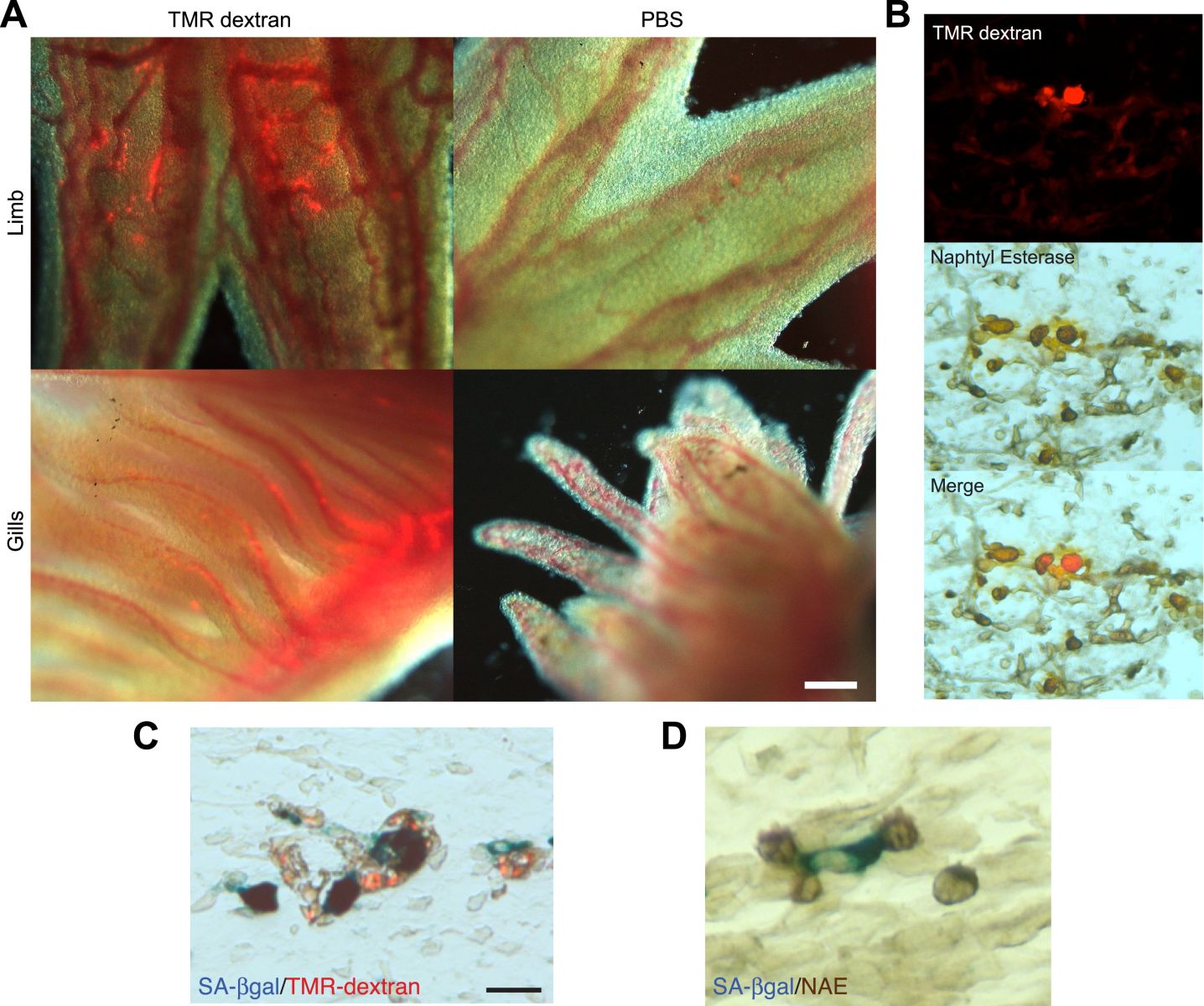How salamanders avoid senescence
Interview with
Lose a limb or another part of your body and they'll never grow back. But in some animals, that's not the case. And entirely new arms, legs, and other organs can regrow from scratch. So, why the difference? According to UCL's Maximina Yun, it's down to a powerful system operated by macrophages for eliminating senescent or aged cells as she's been showing in salamanders. She spoke with Chris Smith...
According to UCL's Maximina Yun, it's down to a powerful system operated by macrophages for eliminating senescent or aged cells as she's been showing in salamanders. She spoke with Chris Smith...
Maximina - Even from the shoulder level, they can regenerate their full arms, and also they can regenerate entire legs, their tails, parts of their heart, parts of their eyes and brains.
Chris - And if you keep on doing this to a salamander, if you let its leg grow back and then you chop it off again. Does it get less good at doing that regeneration process each time you do it or is there no decrement in regenerative capacity with time like that?
Maximina - You're right. There's absolutely no loss in regenerative abilities. So, every time they regenerate a new limb, this happens absolutely perfectly. And actually, the regenerated limb is identical to the one that was lost.
Chris - So, do we have any idea as to how they're doing that or why they can do that, and why they don't suffer a sort of regeneration fatigue? Because, normally, if you flog a tissue to keep on repairing and restoring itself, the cells do eventually do give up the ghost, don't they? They become very old and they senesce, they switch off, they won't divide anymore.
Maximina - Exactly. When we started this work, we did not have much of an idea of why this happened. However, we think that our work has illuminated some these aspects. So, basically, what we found is that through the course of regeneration, these cells which are called senescence cells, do appear. However, the salamanders have an incredible capacity to eliminate these cells which will otherwise result in the aging of the tissue, so that at the end of regeneration process, there are no cells remaining. They have all been eliminated.
Chris - Aright. So, you've got a system where they regenerate in the same way, let's say, one of our tissues would. They do produce cells which are, for want of a better phrase, tired, because they divided a lot and they become senescent. But then, something happens to those cells. They get removed and it leaves just a pristine playing field again. The cells are all non-senescent fully functional cells again at the end of the regeneration.
Maximina - Exactly. You're total right. And what our research told us as well is that the immune system, and in particular the macrophage, is an essential part of the mechanism by which these cells are eliminated.
Chris - They're actually actively seeking out and destroying these senescent cells, are they?
Maximina - Exactly.
Chris - Do we know what they're looking for? What do these macrophages go after? How do they tell you are a senescent cell, you've divided too many times, you are gonna be destroyed.
Maximina - Well, that's an excellent question, because it's something that we haven't yet addressed, at least in this part of the work, but it's part of what we are doing now. So, what are the signals that attract the macrophages to these senescent cells?
Chris - And if you kill off the macrophages or inhibit them, or prevent macrophages from being there, do you see what one would predict would happen? Which is that you would see a population of highly senescent cells and there would be an impact on regenerative effort if you then come along and repeat, say, the removal of a limb under those settings.
Maximina - We do see exactly what you described.
Chris - So, how did you find that the macrophages were doing this important role in the first place? What lead you to make that conclusion?
Maximina - So, we used a very nice set of tools which allow us to, first, label the macrophages. So, we know where they are within a tissue and we realized that they were being recruited to the sites of senescent cells. Whether these were the endogenous senescent cells that appear in regeneration or whether these were senescent cells that we implanted within those tissues.
Chris - And do we know why this happens in a salamander but it appears to have been abandoned as you go up the evolutionary tree. Why don't humans have this amazing ability?
Maximina - Well, you're quite right and it's been shown that these senescent cells are involved in many age-related disorders. Now, we don't know exactly why this is happening, what's the difference the salamander and humans. But what we think is that differences in the immune system between salamanders and humans could be playing a role. And, clearly, if we can find what these differences are then we can perhaps design therapies and strategies to eliminate senescent cells in humans eventually.
- Previous Mouse ultrasound
- Next What causes tinnitus?










Comments
Add a comment